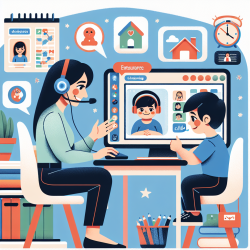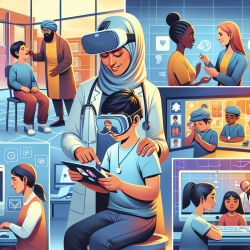Unlock the Secrets: How to Overcome Barriers to Healthcare Access for Children!
As practitioners in the field of speech-language pathology, our primary goal is to ensure that children receive the best possible care. However, achieving this goal often involves navigating a complex landscape of barriers to healthcare access. A recent study titled Identifying local barriers to access to healthcare services in Chile using a communitarian approach provides valuable insights that can help us improve our practices and outcomes for children.
Understanding the Barriers
The study by Núñez and Manzano (2022) identifies several key barriers to healthcare access in Chile, which can be extrapolated to other contexts, including our own. These barriers include:
- Health Policies: Lack of awareness about health programs, especially those related to prevention and rehabilitation.
- Characteristics of Healthcare Services: Long travel times, lack of availability of specialized facilities, and long waiting times for appointments.
- Utilization of Services: Difficulty in accessing necessary medical attention and medications.
- Consumer Satisfaction: Low health insurance coverage and unclear communication from healthcare providers.
- Characteristics of the Population at Risk: Low levels of reimbursement for medical expenses.
Implementing Data-Driven Solutions
By understanding these barriers, we can implement data-driven solutions to improve healthcare access for children. Here are some actionable steps:
- Increase Awareness: Develop educational programs and materials to raise awareness about available health programs, particularly those focused on prevention and rehabilitation.
- Improve Accessibility: Advocate for better transportation options and the establishment of more specialized healthcare facilities in underserved areas.
- Streamline Services: Work with healthcare providers to reduce waiting times and ensure that children receive timely medical attention.
- Enhance Communication: Train healthcare providers in clear and empathetic communication to improve consumer satisfaction.
- Financial Support: Advocate for better health insurance coverage and reimbursement policies to reduce the financial burden on families.
Encouraging Further Research
While the study provides a robust framework for identifying barriers to healthcare access, it also highlights the need for further research. Practitioners are encouraged to conduct localized studies to identify specific barriers in their communities and develop tailored solutions. By leveraging data and community input, we can create more effective and equitable healthcare systems.
Conclusion
Improving healthcare access for children is a multifaceted challenge that requires a data-driven approach. By understanding and addressing the barriers identified in the study by Núñez and Manzano, we can make significant strides in providing better care for children. For practitioners, this means not only implementing the study's findings but also engaging in ongoing research to continually refine and improve our approaches.
To read the original research paper, please follow this link: Identifying local barriers to access to healthcare services in Chile using a communitarian approach.










